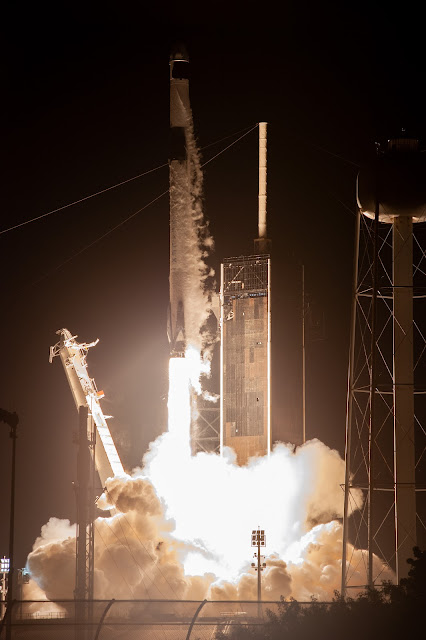NASA Astronauts Moghbeli & O’Hara: New Photos | International Space Station
Astronauts Loral O'Hara and Jasmin Moghbeli work on spacesuits
Loral O'Hara and Jasmin Moghbeli configure spacewalking tools
Astronaut Moghbeli poses with a spacesuit
Astronaut O'Hara replaces components on a biological printer
Moghbeli sets up the Cell Gravisensing-2 experiment
Moghbeli installs a new hydrogen sensor
Moghbeli configures spacewalking tools
Spacesuits are pictured inside the Quest airlock
NASA astronauts Moghbeli and O’Hara are in the midst of a science mission living and working aboard the microgravity laboratory to advance scientific knowledge and demonstrate new technologies for future human and robotic exploration missions, including lunar missions through NASA’s Artemis program.
Moghbeli and O’Hara concluded their first spacewalk on Nov. 1, 2023, after 6 hours and 42 minutes. Moghbeli was designated extravehicular crew member 1 (EV1), was wearing a suit with red stripes. O’Hara, designated extravehicular crew member 2 (EV 2), was in an unmarked suit.
Moghbeli and O’Hara were able to complete one of the spacewalk’s two major objectives, replacing one of the 12 trundle bearing assemblies on the port solar alpha rotary joint. This allows the arrays to track the Sun and generate electricity to power the station. Mission Control told the station crew that the solar array is functioning well after the bearing replacement. The spacewalkers also removed a handling bar fixture to prepare for future installation of a roll-out solar array and properly configured a cable that was previously interfering with an external camera.
Follow Expedition 70 Updates:
https://blogs.nasa.gov/spacestation/
Expedition 70 Crew
Station Commander: Andreas Mogensen of the European Space Agency (Denmark)
Roscosmos (Russia): Oleg Kononenko, Nikolai Chub, Konstantin Borisov
JAXA: Flight Engineer Satoshi Furukawa (Japan)
NASA: Jasmin Moghbeli, Loral O'Hara (USA)
An international partnership of space agencies provides and operates the elements of the International Space Station (ISS). The principals are the space agencies of the United States, Russia, Europe, Japan, and Canada. The ISS has been the most politically complex space exploration program ever undertaken.
Credit: NASA's Johnson Space Center (JSC)
Image Dates: Oct. 27-Nov. 13, 2023
#NASA #Space #Astronomy #Science #ISS #Earth #HumanSpaceflight #EVA #Spacewalks #Astronauts #LoralOHara #JasminMoghbeli #UnitedStates #Cosmonauts #OlegKononenko #NikolaiChub #Russia #Роскосмос #AndreasMogensen #ESA #Europe #SatoshiFurukawa #JAXA #Japan #SpaceLaboratory #Expedition70 #STEM #Education
APoD.jpg)













.jpg)
.jpg)








.jpg)
APoD.jpg)





